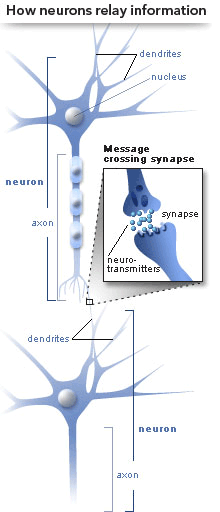Our brains are fascinating! They are spongy, lightweight (approximately 1.36 Kilograms), and look like the head of a cauliflower.
While the human brain is a complex and intricate system made up of billions of nerve cells, there are many parts that are quite primitive – most notably the cerebellum and brain stem. These more primitive parts help us coordinate our movements and control essential functions such as breathing. The cerebrum is the most evolved part of the human brain and is also the largest! In addition to allowing us to feel, think, and create, it is the part of the brain responsible for our conscious experiences, voluntary movements and our ability to receive, store, and retrieve memories. In short, the cerebrum is what makes us human.
A Tale of Two Hemispheres
The brain is divided into two main hemispheres, you’ve likely heard of “being Left or Right brained”. The left and right hemispheres of the cerebral cortex contain four lobes, making eight lobes in total within the human brain.
The four lobes of each hemisphere within the human brain are:
 Frontal lobe
Frontal lobe Temporal lobe
Temporal lobe Parietal lobe
Parietal lobe Occipital lobe
Occipital lobe
Each of these lobes is tasked to complete specific functions. For example, the frontal lobe’s specialty is decision making while the occipital lobe’s specialty is vision. There are also deeper structures in the human brain such as the limbic system which is important for long-term memory functions.
Roll your mouse over the picture on this page to discover more about the different parts of the human brain.
Billions of Neurons
The human brain is made up of billions of nerve cells called neurons with very special properties. These neurons communicate with other cells through dendrites and axons. Each neuron receives information that is transmitted from other cells using its dendrites and transmits information to other cells through axons. Neurons communicate with somewhere between 1000 and 10,000 other cells. When communicating with other cells, neurons don’t touch each other; rather they release chemical molecules (neurotransmitters) that deliver nerve impulses across a small gap called a synapse. The impulses (messages) will travel across strongly if many of these neurotransmitters are secreted. Conversely if only a few are secreted then the message is weak and this is important as these messages are how your brain communicates with your body.
 Our Neural Network is Really Important
Our Neural Network is Really Important
The information that our neural network conveys to our brains is incredibly important because they help us make sense of the world in which we live. Here is a simple example to illustrate this process and how our brains decipher this information:
Imagine that you touch something with your finger without looking at the object. Once you touch, nerve impulses instantly fire from your finger and travel from one neuron to the next until they arrive at the brain and deliver the information. Your brain then runs through a series of checks very quickly to determine what the object is – was it hot or cold, soft or hard, smooth or rough? etc. Your brain will assess this information in order to compare the characteristics with items that have been encountered before in order to build a profile of what the object is that you have touched. If the object turns out to be something that you have never touched before your brain will store this information in your memory as a “first touch” for reference in the future of things to compare against. Learn more about memory.
As you can see, we depend on the ability to process this information on a daily basis in order to understand and interact with our world. If this process starts to break down or weaken then our world starts to make less sense and we begin to lose ourselves. This is most recognizable with individuals suffering from schizophrenia and Alzheimer’s.
(Learn more about how the brain can change for better or worse.)
Glial Cells – More Numerous but Less Glamourous
The human brain’s glial cells, also known as glia, are more numerous than neurons and comprise nearly 90% of the cells in the brain. Even though they are more prevalent (likely around one trillion on average in the brain), they are essentially servants to the neurons. Glial cells are responsible for the following tasks:
 Making myelin to protect neurons and speed transmission
Making myelin to protect neurons and speed transmission Disposing of dead neurons
Disposing of dead neurons Providing nutrition to neurons
Providing nutrition to neurons Repairing injured neurons
Repairing injured neurons As well as supporting neurons in a variety of other ways as they need it
As well as supporting neurons in a variety of other ways as they need it
Pretty much the only thing that these plentiful glial cells don’t do is deliver impulses around like neurons.
All of the Pieces Working Together
Each of the components we have discussed work together to perform a variety of functions that allow us to navigate through our daily lives. All of these pieces are responsible for enabling us to speak and learn, dance and sing, remember our childhood and much, much more.
This is why it is extremely important to maintain your brain fitness with regular cognitive exercises. In similar ways that regular fitness regimes can have significant impacts on your overall health, the benefits of maintaining a healthy brain through regular brain training and fitness exercises is paramount to your overall health and well-being, especially as you age.
The Brain 101 Important Facts Summarized:
 The brain is made up of billions of neurons
The brain is made up of billions of neurons The brain has two hemispheres (left & right)
The brain has two hemispheres (left & right) Each of the brain’s hemispheres is comprised of four lobes
Each of the brain’s hemispheres is comprised of four lobes Each of the brain’s lobes specializes in something different
Each of the brain’s lobes specializes in something different Brain fitness is for everyone and helps keep your brain well-tuned and running in peak condition!
Brain fitness is for everyone and helps keep your brain well-tuned and running in peak condition!






 English
English
 Français
Français


